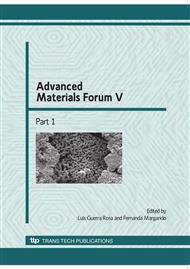p.1306
p.1313
p.1321
p.1329
p.1336
p.1342
p.1349
p.1355
p.1365
Analysis of Strength Scaling Effect in Portuguese Limestone: Comparison between Three- and Four-Point Bending Tests
Abstract:
This paper presents a comparative study between 3- and 4-point bending tests applied to five Portuguese limestones. The study has been conducted on sawed limestone specimens, all showing the same surface finishing. The materials were compared for two distinct situations: i) using a 3-point flexure loading configuration in batches of materials with larger cross sectional specimen dimension (50 × 30 mm2); and ii) using a 4-point flexure loading configuration in the same batch of materials but with smaller cross sectional dimensions (30 × 25 mm2). In all situations, the materials have broken due to intrinsic volume defects. Formulae for the effective volumes and effective surfaces for rectangular beam specimens loaded in flexure were reviewed in order to analyse the strength scaling effect. The results show the applicability of the Weibull statistics to explain the differences in the results of the 3-point and 4-point bending tests, even when different cross sectional sizes are employed. Among other important remarks, in all the different limestone specimens used it was possible to confirm that the strength values determined experimentally via 3-point bending are of the same order as those estimated for the same loading configuration but via experimental data of 4-point bending tests using the Weibull strength scaling approach, even if employing a different cross-sectional dimension.
Info:
Periodical:
Pages:
1336-1341
Citation:
Online since:
January 2010
Price:
Сopyright:
© 2010 Trans Tech Publications Ltd. All Rights Reserved
Share:
Citation:


